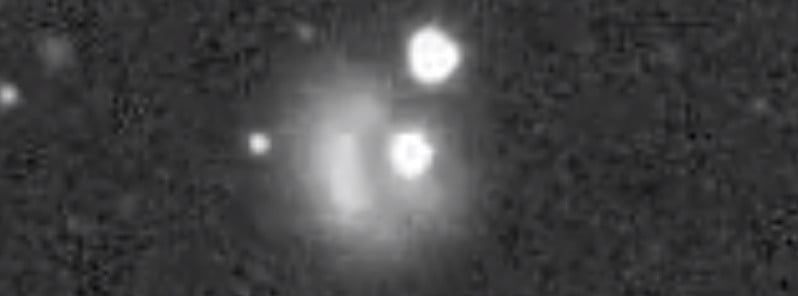DART hits asteroid Dimorphos in the world’s first planetary defense technology demonstration

NASA’s Double Asteroid Redirection Test (DART), the world’s first planetary defense technology demonstration, successfully struck its asteroid target at 23:14 UTC on September 26, 2022, after 10 months of flying through space.
The target was a binary system Didymos (provisional designation 1996 GT) – a 780 m (2 560 feet) wide potentially hazardous asteroid and near-Earth object of the Apollo group – or specifically, its 160 m (530 feet) wide moon named Dimorphos.
During the spacecraft’s final moments before impact, its Didymos Reconnaissance and Asteroid Camera for Optical navigation (DRACO) imager took four images capturing its terminal approach to Dimorphos.1
Fifteen days before impact, DART’s CubeSat companion Light Italian CubeSat for Imaging of Asteroids (LICIACube), provided by the Italian Space Agency, deployed from the spacecraft to capture images of DART’s impact and of the asteroid’s resulting cloud of ejected matter.
In tandem with the images returned by DRACO, LICIACube’s images are intended to provide a view of the collision’s effects to help researchers better characterize the effectiveness of kinetic impact in deflecting an asteroid.
Because LICIACube doesn’t carry a large antenna, images will be downlinked to Earth one by one in the coming weeks.
The first images that came in show a part of the impact:
The impact was also recorded by professional and amateur astronomers across the world:
The demonstration hopes to show that kinetic impact is a viable technology that could be deployed someday to prevent an asteroid from hitting the Earth.
Roughly four years from now, the European Space Agency’s Hera project will conduct detailed surveys of both Dimorphos and Didymos, with a particular focus on the crater left by DART’s collision and a precise measurement of Dimorphos’ mass.
References:
1 NASA’s DART Mission Hits Asteroid in First-Ever Planetary Defense Test – NASA – September 27, 2022
Featured image credit: NASA

Commenting rules and guidelines
We value the thoughts and opinions of our readers and welcome healthy discussions on our website. In order to maintain a respectful and positive community, we ask that all commenters follow these rules.